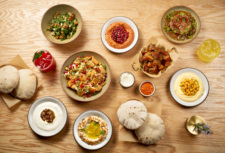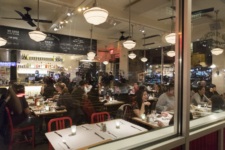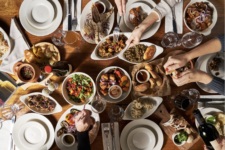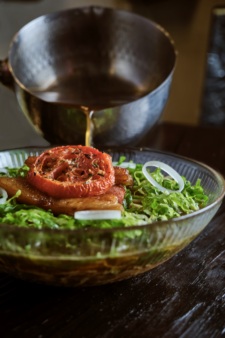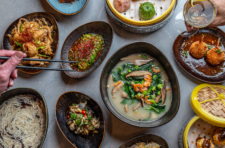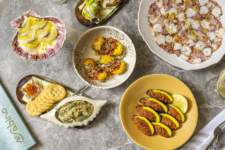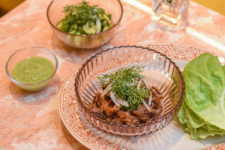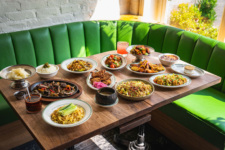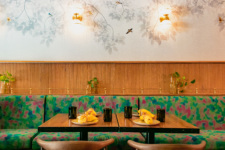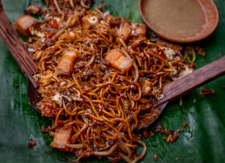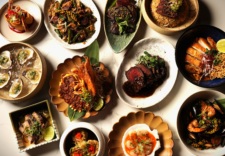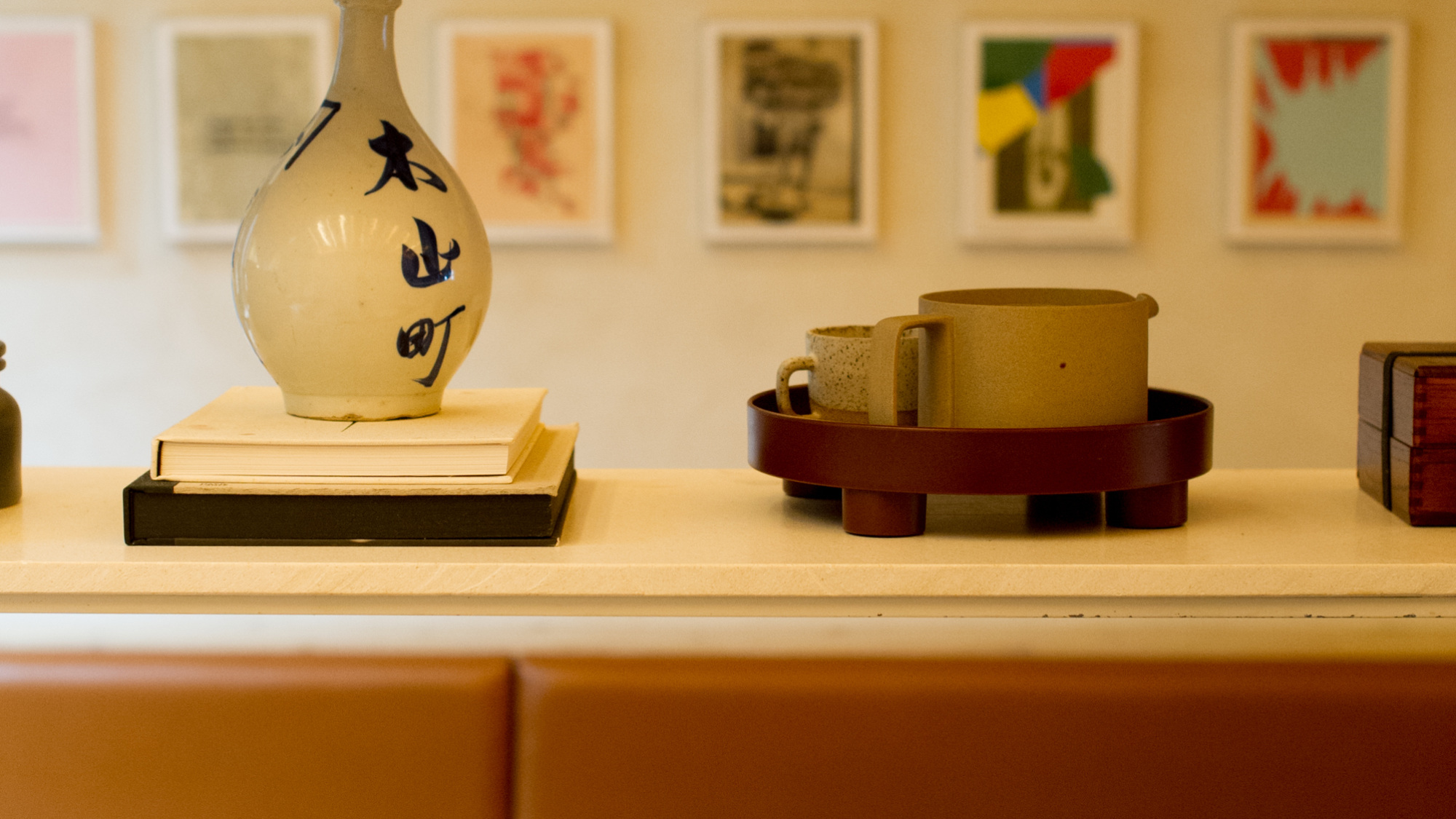
The Dishes You’ll Want to Order at New York’s Llama San
For nearly five years, Llama San, the sophomore effort from Llama Inn chef and partner Erik Ramirez, has delighted New Yorkers with its elegant, creative takes on Nikkei cuisine, a hybrid of Japanese and Peruvian flavors.
And what keeps them enthralled is how the menu continuously changes with the season, says chef de cuisine Francisco Castillo. Castillo, who joined Llama San in August 2022, works closely with Ramirez to make sure the menu represents the best of what’s in season. With the newest iteration of the menu, Castillo says they were both inspired by the city itself.
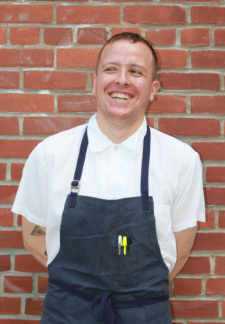
“New York plays a really important part. The city sets the pace in terms of approach, and this menu comes from wanting to express what we think Nikkei cuisine looks like in New York, specifically,” Castillo says.
First and foremost, his focus is on taste.
“Everything that we cook [at Llama San] we try to make really tasty. There’s always a kick. We’d like people to get more familiar with Nikkei cuisine, so it’s not seen as something that’s just for a special occasion or something. We want to show our approach while keeping it approachable, conceptually,” he adds.
Here, in his own words, Castillo takes us through five essential dishes on the new menu at Llama San.
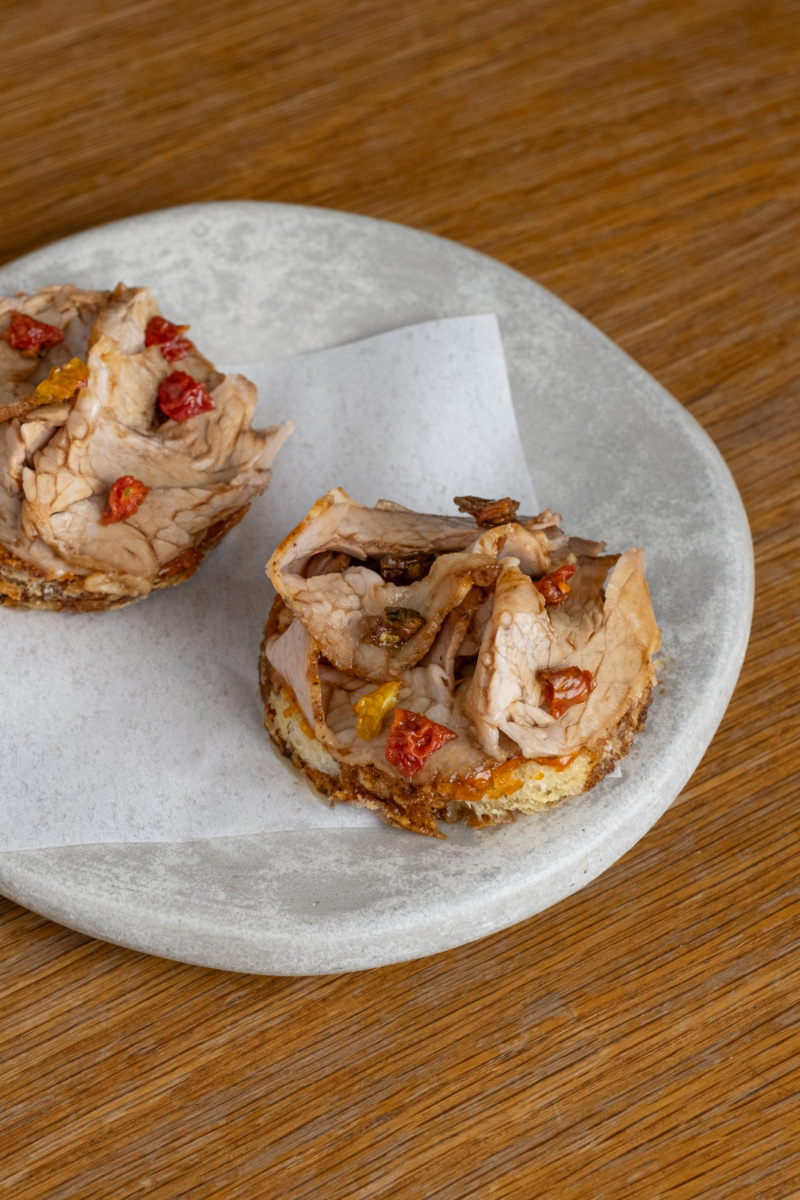

1. Veal Breast Toast
Mission fig, aji panca
“It’s a sourdough toast. We use a spread made with homemade mayonnaise and we do our take on a Mexican salsa macha. In this case, we change the Mexican chiles to Peruvian ones. We also use chile panca. It’s slow-cooked with garlic, white sesame seeds, peanuts, chile panca, cacao nibs, with some fish sauce. We cook it very slowly, so we get all of the flavors, and then we blend it until it’s a little chunky and spread it on the toast.
“It’s a new perspective on more traditional Nikkei flavors. It’s not a traditional dish, but we try to achieve the flavor profile of what Nikkei cuisine is from a different angle, with riffs on classics. The toast gets topped with a veal breast that we press and slice. It’s seasoned with a ponzu honey vinaigrette, made in house. We top it with fresh figs. That’s one of my favorite snacks on the menu right now. It’s sweet, spicy, meaty, and at the same time the bread gives you that platform for the flavors so it’s not overwhelming.”


2. Fluke
Razor clams, coconut, cucumber, caviar
“This is sort of like a play on ceviche mixto in Eastern Peru, which is like fish and seafood. We use fresh razor clams and fluke. We season it with roasted lemon seed oil. It’s a base of fish sauce with lemon, seasoned with garlic and habanero. We use that to season the fluke and the clams. We also add a little dill oil.
“The liquid we use in this case is seasoned with coconut, a little bit of walnut oil, and we top it with caviar. It’s, again, not a traditional Nikkei preparation, but it’s a signature way of seeing the ceviche dishes in our restaurant. We use the base, and we season it with what we think will make a good dish. That’s a new dish, we’re really excited about it.”
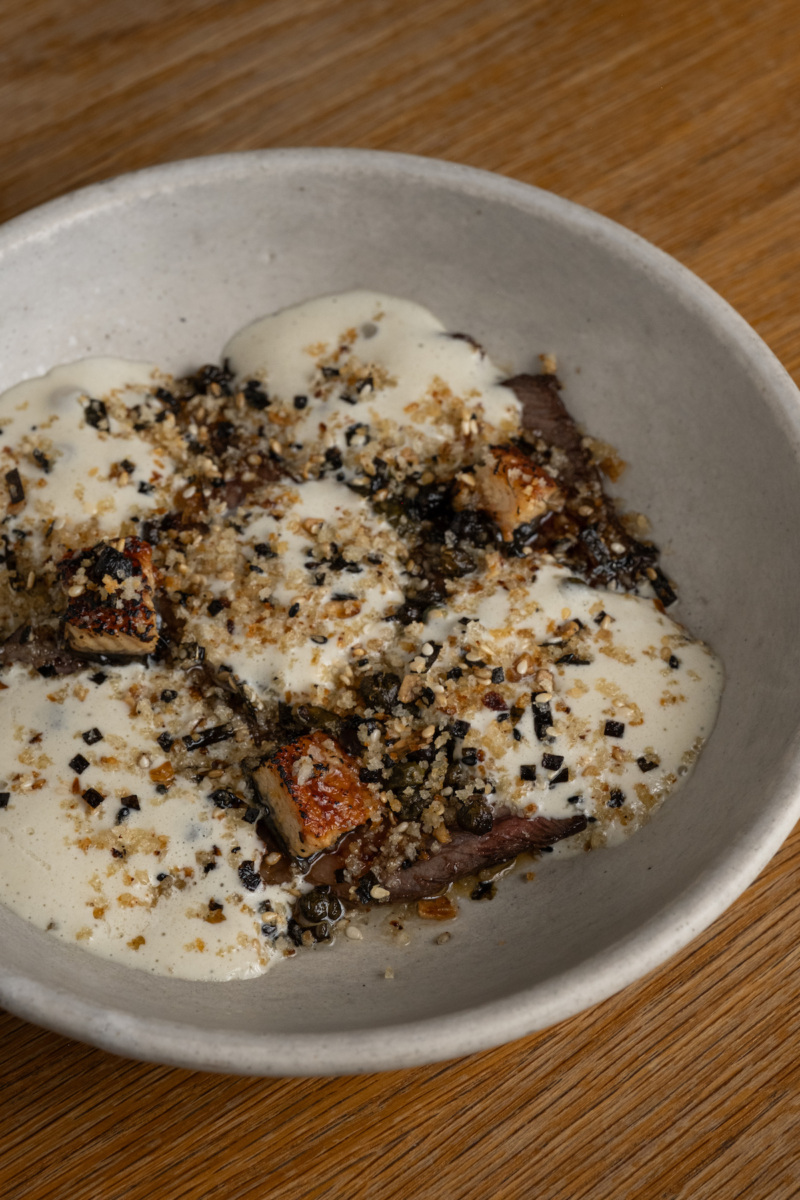

3. Wagyu Carpaccio
Tonnato, eel, capers
“It’s one third carpaccio, one third tataki, and one third vitello tonnato. It’s a cross between those three preparations of rare meat. We sear the wagyu, heavily season it with Sichuan peppercorns, black peppercorns, and salt, and then let it rest for a day before we season it with yakiniku, which is traditionally used in Japan for the meat on the barbecue. We torch it a little bit to melt away the fat of the wagyu.
“We season it with some eel, fried capers, a riff on tonnato sauce, and we top it with a mix of roasted panko with roasted sesame seeds. You’re going to be finding a lot of different textures. You have the meat, and then these small bits of crunch within the dish. It’s not a big crunch, but it’s a constant small crunch.”
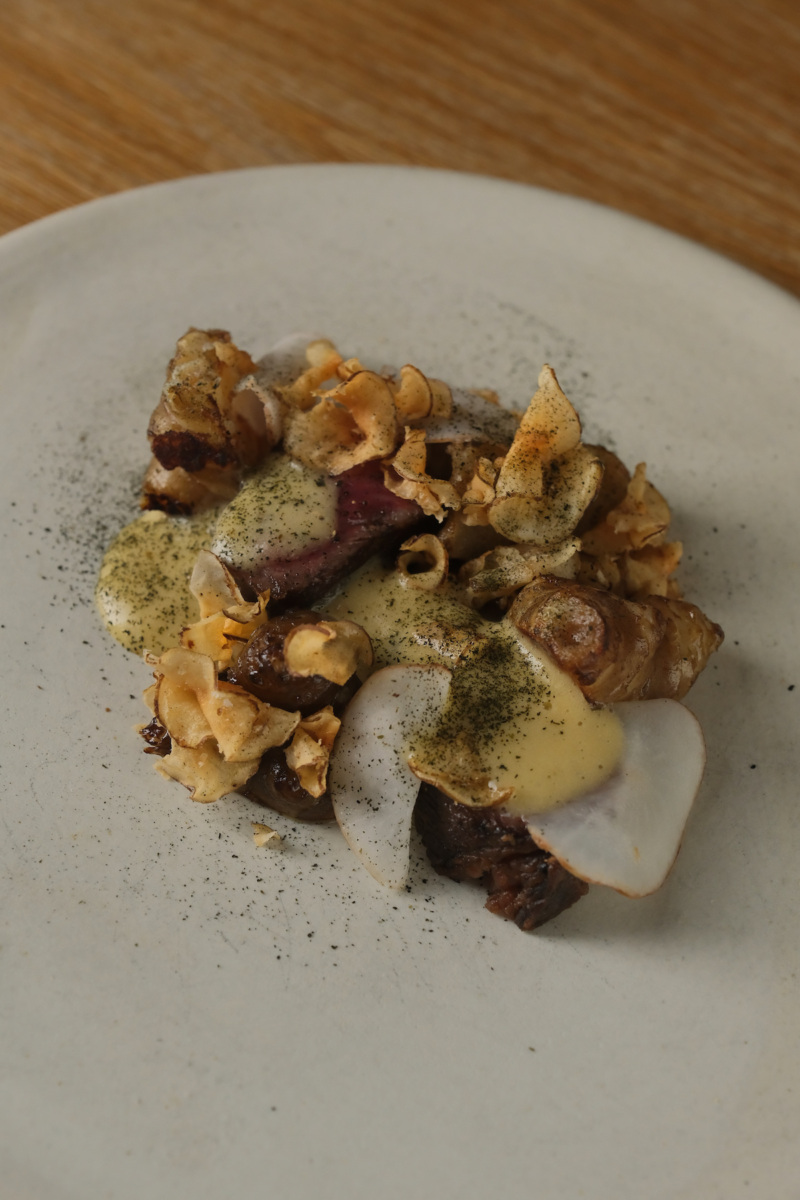

4. Wagyu
Sunchokes, huacatay
“For this, we use a pan-roasted wagyu seasoned with Sichuan peppercorns, and some signature spices that we use here in the restaurant that help us tie together the different dishes on the menu. We made a sabayon with sunchokes, we use braised sunchokes in a dashi, pickled sunchokes, and fried sunchokes. We’re really excited about it. It’s really tasty and comfortable, but it has a new flavor profile with the use of the sunchokes. We season it with a bit of huacatay, which is from the Peruvian Amazon. It’s also known as black mint in the U.S.”
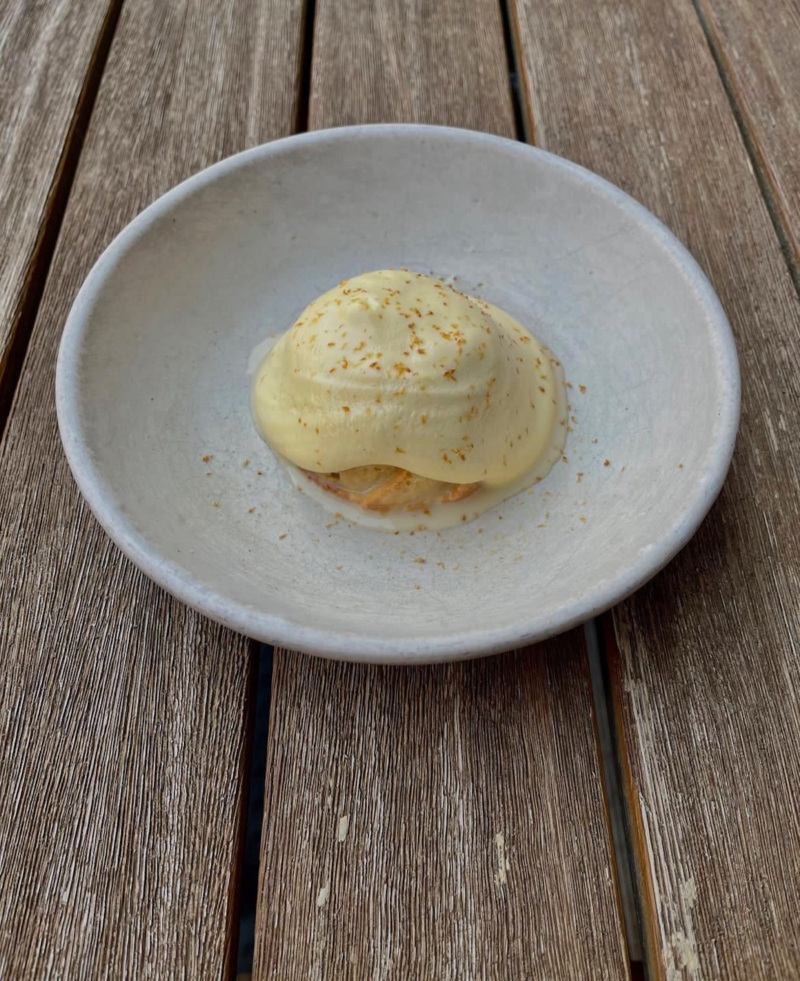

5. Tres Leches
Lemon skin, tonka beans
“At the end we have the tres leches, which has become a sort of signature dessert. We use a chiffon cake, because we think it’s the best one to soak. It gets really soaked in a short period of time. We soak it in a traditional liquid with evaporated milk, condensed milk, and heavy cream, but in this case, we add shiro miso, so it adds a sort of savory aspect to the cake. We use a lemon skin purée, which I think is the element that makes the difference in this dessert. Then we top with a bit of rum to cut some of the fat, and we finish it with white chocolate and tonka beans on top. It’s like a riff on traditional tres leches, but it has a lot of elements that make a difference.”
Llama San is open for dinner Monday through Sunday from 5 p.m. until 11 p.m., and for brunch Saturday and Sunday from 11 a.m. until 2 p.m.
Ellie Plass is a freelance writer based in Brooklyn. Follow her on Instagram and X (formerly Twitter). Follow Resy, too.
Discover More

Stephen Satterfield's Corner Table



